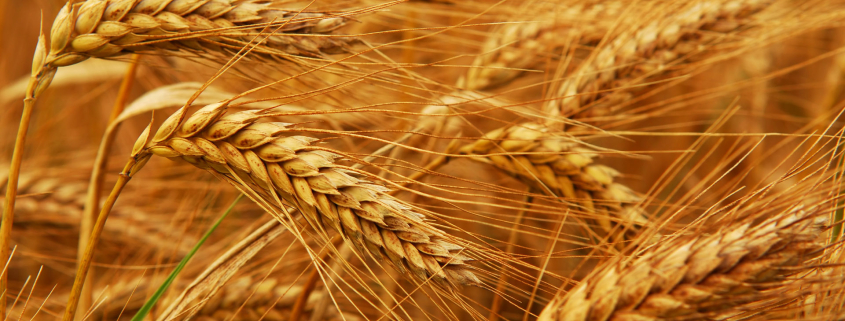Reducing Lodging & Increasing Grain Yield in Wheat
With optimal growing conditions in 2016, vegetative growth & yield potential of wheat crops is high and with this comes the risk of significant yield losses due to lodging later in the season. Lodging is the result of poor structural integrity (strength) of stems usually caused by excessive vegetative growth (ie. optimal soil moisture & high nitrogen availability) in high yielding crops where stems are not able to support the weight of the dense canopy & loaded heads. Late season rain and wind also compound this issue.
Nutrition does play an important role in the severity of lodging losses and there are a number of key nutrients that need to be managed well to avoid significant yield losses. Nitrogen of course is the highest input nutrient for cereal production and has a significant effect on vegetative growth and grain protein. The key for nitrogen is not to put too much on too early but try and split applications if possible to reduce excessive vigour during stem elongation. Applying early molybdenum sprays on susceptible soils (eg. strongly acid) will help nitrogen (nitrate) conversion & reduce excessive vigour & weak stems.
Optimising levels of key essential nutrients that play important roles in structural integrity is also critical for reducing lodging losses. The three major ones are calcium, copper and boron. Calcium is an essential component of all cell walls and vital for building strong plants. While calcium demand is lower for cereals compared to canola and pulses, it is still required is reasonable amounts (>5000 mg/kg DM). Furthermore, high nitrogen combined with excessive vegetative growth increases calcium demand often leading to a dilution of cellular calcium thus making crops more prone to structural weakness & disease issues. In-crop foliar sprays can be helpful, however the bulk of the calcium supply comes from the soil and this really needs to be addressed pre-sowing as post-emergent soil application is usually too slow to be of major benefit.
Copper deficiency is common in cereals grown on a wide variety of soil types throughout Australia. Alkaline soils or those high in organic matter, lock up copper making it unavailable to the crop. Crops grown on many of the heavily leached acid sands in Western Australia also have significant copper deficiency issues due to the very low levels of residual copper. Copper is required for the lignification of stems and deficiencies greatly reduce the crop’s physical strength & ability to resist disease attack. Nutrient balance is important here as high nitrates reduce copper uptake while also increasing copper demand for vegetative development. Copper is also essential for anthesis & seed set so if you are on low copper soils you should be applying at least one early foliar spray (4 leaf) as standard practice & possibly another at booting if yield potential is high.
Boron like calcium is a key component of cell walls, hence its importance for plant structure. Some of you may be a bit wary about applying boron on wheat as usually it is associated with toxicities rather than deficiencies in cereals. However if tissue levels are low (< 4 mg/kg) there can be positive responses to foliar boron application in terms of reduced lodging and improved anthesis. Boron also facilitates calcium uptake so provides additional benefits with regard to plant health and strength.
Looking at overall nutrient balance, growers should also keep an eye on potassium and magnesium levels in relation to nitrogen. These nutrients are important for sugar and carbohydrate production and help balance the detrimental effect of excessive nitrogen on crop health and development.
Foliar nutrient options for Wheat
4-5 leaf – LIG-GRAIN PLUS (Zn, Cu, B, Mo) @ 2 L/ha, LIG-ZINC + Cu @ 1 L/ha, LIG-COPPER @ 1 L/ha, Pasture Cal @ 2-3 L/ha.
Looking for a calcium, boron & moly product? Talk to us about LIG-CBM (Ca 8%, B 1%, Mo 0.25%).
Booting/pre-anthesis – LIG-COPPER @ 1 L/ha.


Leave a Reply
Want to join the discussion?Feel free to contribute!